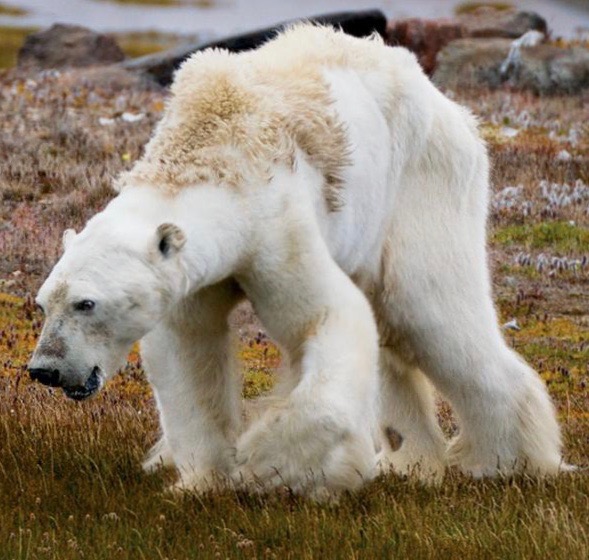If you are reading this blog then I would imagine that you pay attention to media about wildlife to some degree. If so, you have probably seen these gut-wrenching images of a polar bear that was in the throes of starving to death:
Cristina Mittermeier and Paul Nicklen
These photos were taken by Cristina Mittermeier and her partner Paul Nicklen; NatGeo contributors who also run an oceanic conservation non-profit called SeaLegacy.
If you are not following Cristina, Paul, and SeaLegacy on social media then you are missing out. Cristina and Paul specialize in documenting Arctic and oceanic wildlife. The images they produce are absolutely stellar!
[adinserter name=”Block 1″]
Paul’s Original Polar Bear Clip
Paul and Cristina documented the aforementioned wasting polar bear and posted a video about the bear on Paul’s Instagram (see below).
Paul does not say that this particular bear was dying because of global warming.
He does say that in the not too distant future the spectacle of wasting marine mammals will become common due to the effects of global warming.
And that is where things went sideways with this incredible video.
[adinserter name=”Block 2″]
NatGeo
NatGeo ran Paul’s video, but changed the verbiage on the video to “This is what climate change looks like”. The nuance of the change is slight, but it is enough to indicate that this particular animal was dying due to the effects of global warming.
NatGeo’s version of the polar bear video went viral with 2.5 billion views.
Other media outlets picked up the video with NatGeo’s global warming narrative and expounded upon it.
The askew global warming narrative had become a viral juggernaut.
Narrative Course Correction
Cristina Mittermeier, to her credit, recognized NatGeo’s askew narrative. In this month’s issue of NatGeo she set the narrative straight.
“Perhaps we made a mistake in not telling the full story—that we were looking for a picture that foretold the future and that we didn’t know what had happened to this particular polar bear.
I can’t say that this bear was starving because of climate change, but I do know that polar bears rely on a platform of sea ice from which to hunt.”
NatGeo, also to their credit, fell on the sword and acknowledged that they erred in the video’s narrative:
“National Geographic went too far in drawing a definitive connection between climate change and a particular starving polar bear in the opening caption of our video about the animal. We said, “This is what climate change looks like.” While science has established that there is a strong connection between melting sea ice and polar bears dying off, there is no way to know for certain why this bear was on the verge of death.”
[adinserter name=”Block 3″]
Credit Where Credit Is Due
I give Cristina and NatGeo full credit for their efforts on trying to set the narrative of this story straight. It must have taken some editorial guts to make the call to set the record straight.
Global Warming Science
If you are curious as to what the data on climate science looks like feel free to check NASA’s data on the subject. As per always, do your own research, form your opinions, and don’t simply accept what you are told.
NASA’s Evidence For Climate Change
NASA’s Causes For Climate Change
NASA Scientific Consensus On Global Warming

